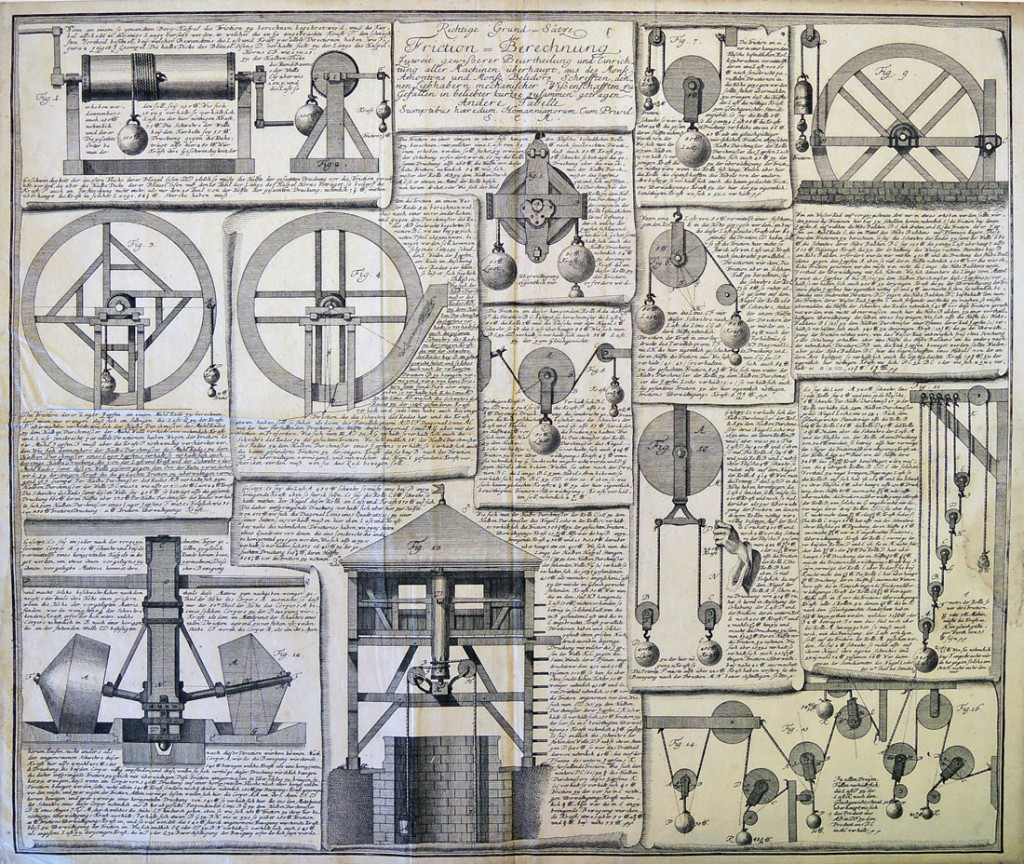 Richtige Grund Sätze der Friction Berechnung, Zuweit gewißerer Beurtheilung und Einrichtung aller Machinen überhaupt, aus des Monsr. Amontons und Monsr. Belidors Schrifften, dennen Lieb habern mechanischer Wissenschafften zu gefallen in beliebter kürtze zusammen getragen Andere Tabelle. Sumptibus hæredun Homannianorum Cum Privil. S. C. M. [ca. 1740-6]. Engraving. Graphic Arts Collection GA 2015- in process
Richtige Grund Sätze der Friction Berechnung, Zuweit gewißerer Beurtheilung und Einrichtung aller Machinen überhaupt, aus des Monsr. Amontons und Monsr. Belidors Schrifften, dennen Lieb habern mechanischer Wissenschafften zu gefallen in beliebter kürtze zusammen getragen Andere Tabelle. Sumptibus hæredun Homannianorum Cum Privil. S. C. M. [ca. 1740-6]. Engraving. Graphic Arts Collection GA 2015- in process
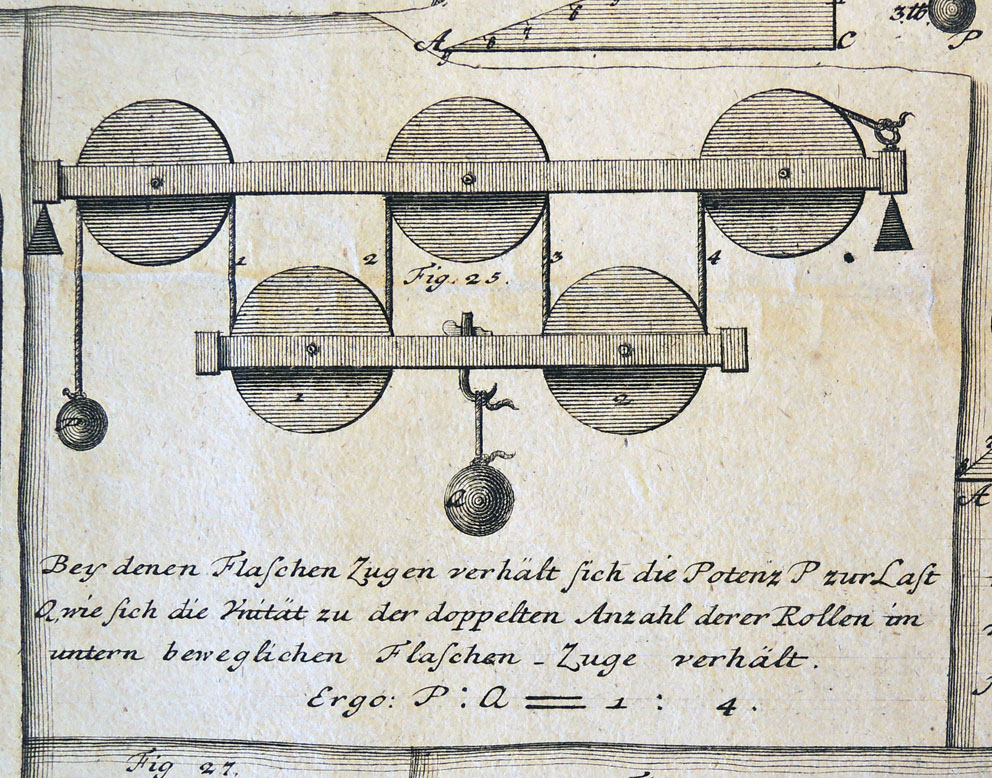
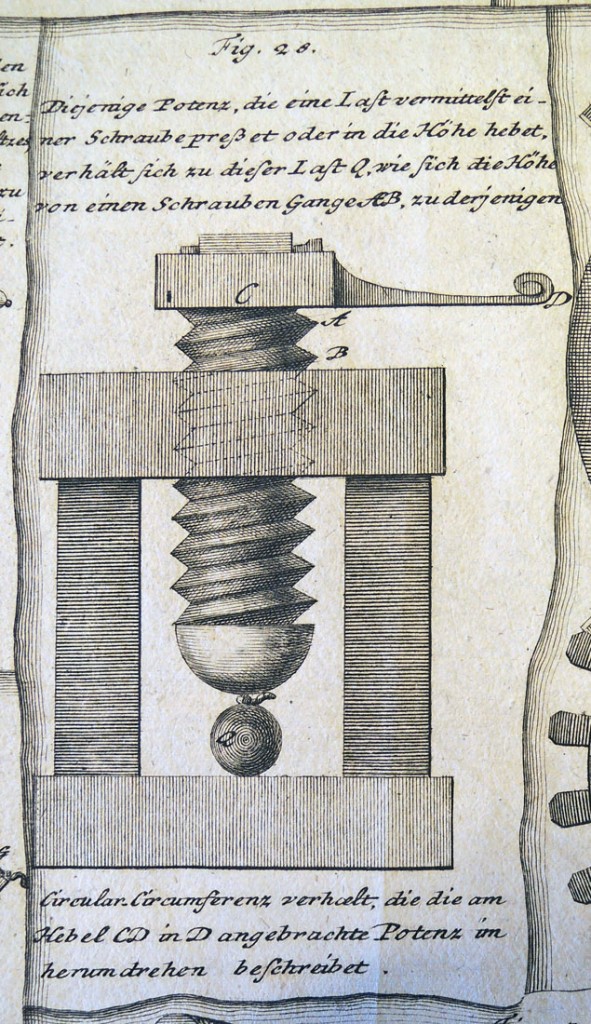
The Graphic Arts Collection recently acquired two large 18th-century wall charts outlining the principles of statics and friction. Homann Erben, one of the leading map publishers of the era, produced and published them in Nurnberg, Germany.
In the chart below, five simple machines are depicted demonstrating the concepts of force, equilibrium, and statics. Forty individual illustrations, together with accompanying descriptions and calculations, show a number of gear mechanisms, counterweights and pulleys, explaining ways in which forces combine with each other so as to produce equilibrium. At the top of this post, our second chart represents the “Important Principles of Friction” in sixteen variations using pulleys and hoists.
The principles being described come from two noted scientists: Guillaume Amontons (1663-1705) and Bernard Forest de Bélidor (1697/98-1761). Amontons “produced the first known study on the question of losses caused by friction in machines, and established the laws of proportionality between the friction and the mutual pressure of the bodies in contact.” Bélidor was professor of mathematics at the artillery school at La Fère, who wrote numerous texts on mechanics, including La Science des ingénieurs (1729), Marquand Library SAX NA2510 .B421 and Architecture hydraulique (1737-39) Recap 9166.162.
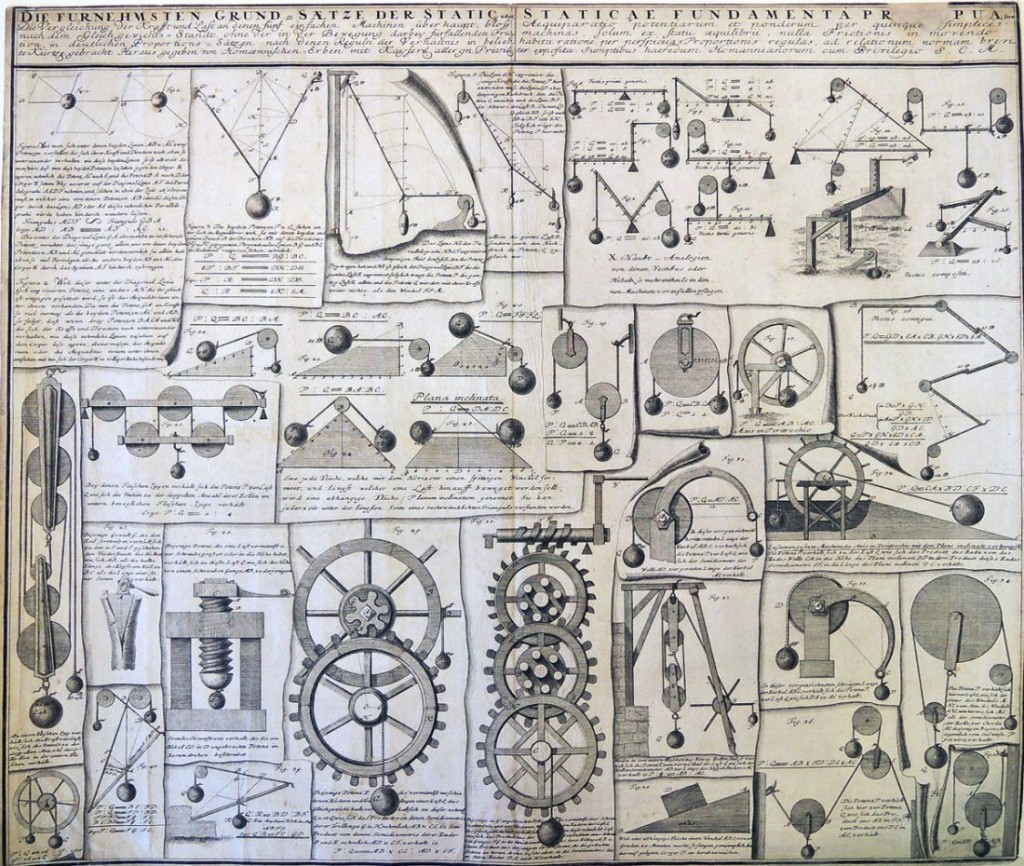 Homann Erben die Fürhehmsten Grund-Sätze der Static; oder Die Vergleichung der krafft und last an denen fünf einfachen machinen über haupt, bloß nach dem gleich gewichts standt, ohne der in der bewegung darbeis fürfallenden friction, in deutlichen proportions sätzen nach denen reguln der verhältnis in beliebte kürtze gebracht. [Nürnberg]: Herausgegeben von Homoennischen erben mit Kayser aller gn. Privl., [ca. 1740-60]. Engraving. Graphic Arts Collection GA2015- in process
Homann Erben die Fürhehmsten Grund-Sätze der Static; oder Die Vergleichung der krafft und last an denen fünf einfachen machinen über haupt, bloß nach dem gleich gewichts standt, ohne der in der bewegung darbeis fürfallenden friction, in deutlichen proportions sätzen nach denen reguln der verhältnis in beliebte kürtze gebracht. [Nürnberg]: Herausgegeben von Homoennischen erben mit Kayser aller gn. Privl., [ca. 1740-60]. Engraving. Graphic Arts Collection GA2015- in process
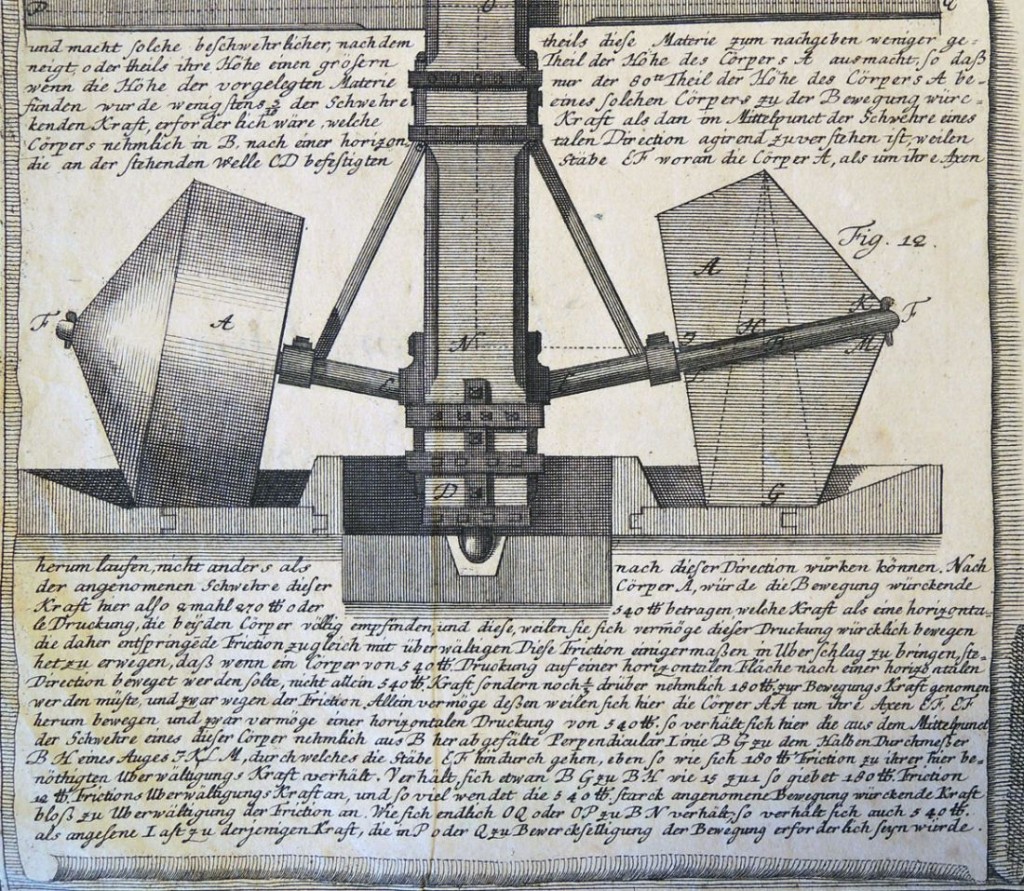
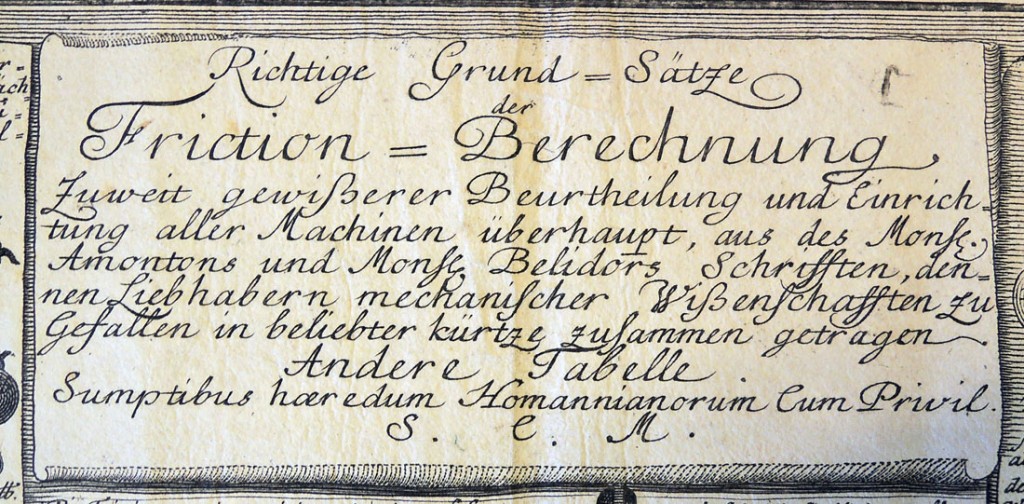

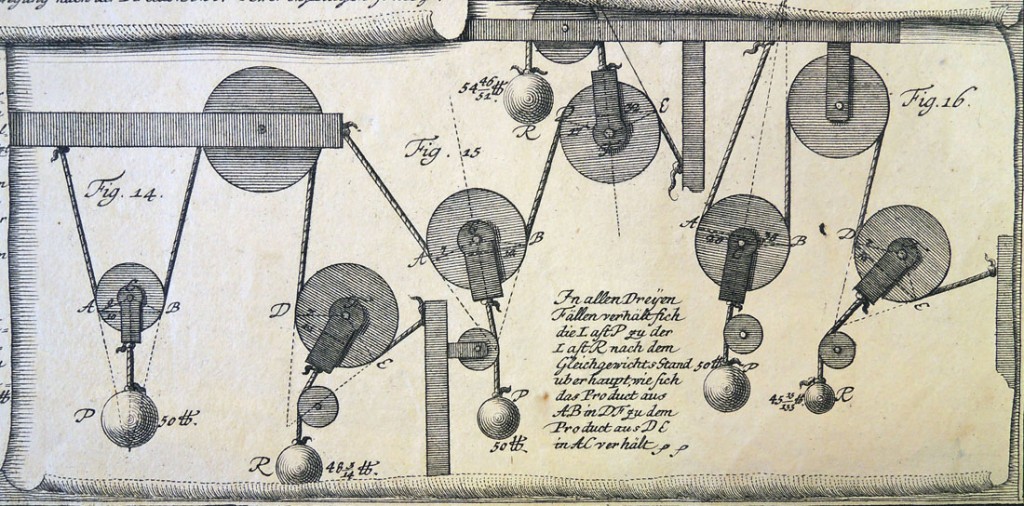
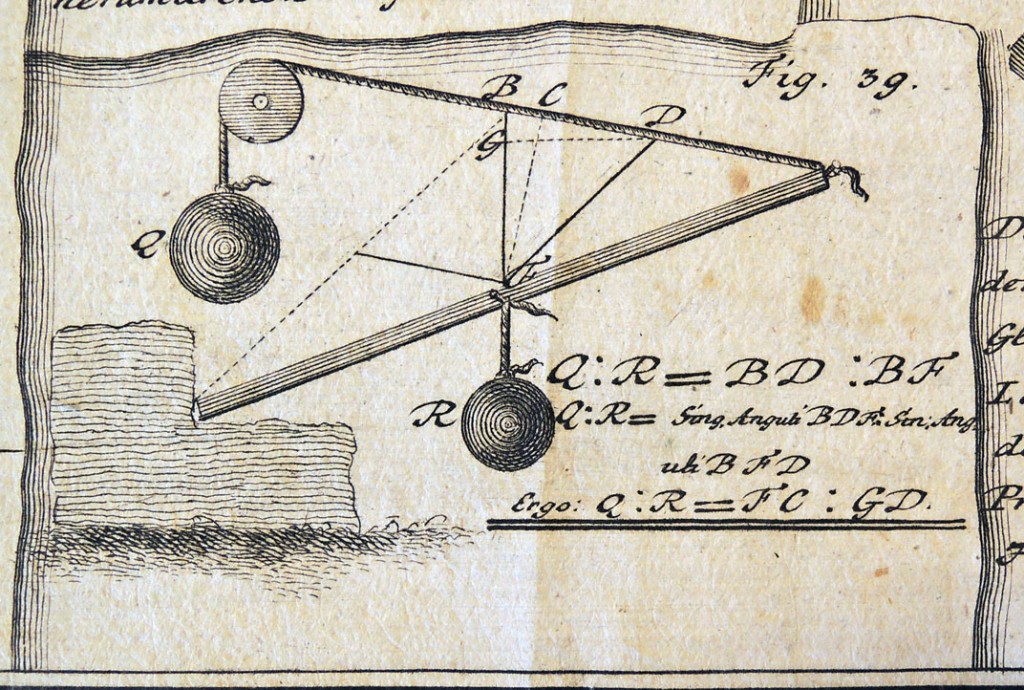
Pingback: Whewell’s Gazette: Year2, Vol. #19 | Whewell's Ghost
Pingback: Science: Sapir Whorf Hypothesis and The Principles of Static and Friction | studyingvisualculture